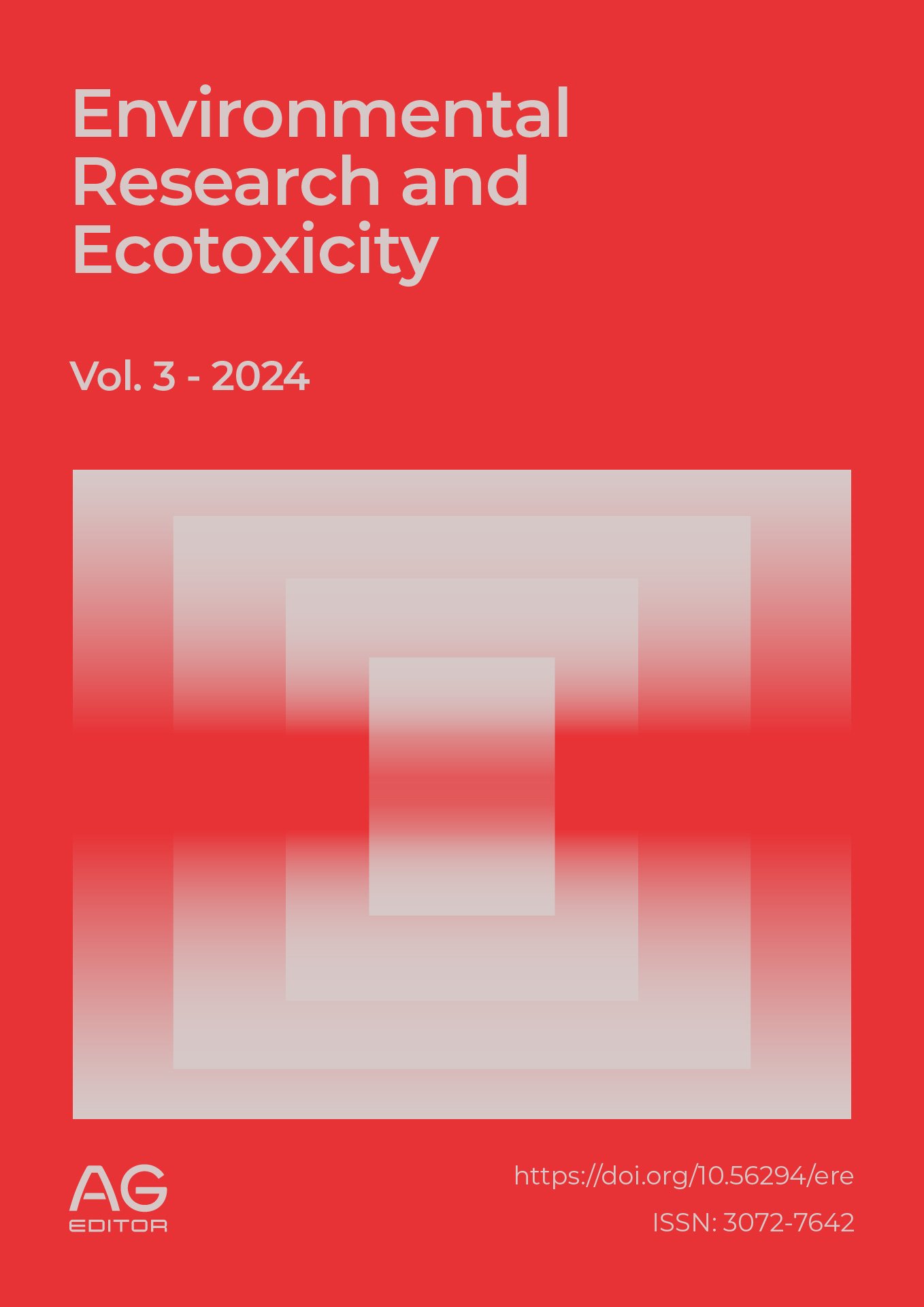History of land use and its impact on the configuration of a rubber saf in the la minas corregidad santo domingo – Florencia
DOI:
https://doi.org/10.56294/ere2024106Keywords:
agroforestry system, rubber, land use history, agroecological management, sustainabilityAbstract
This research aimed to analyze the influence of land use history on the configuration of a rubber agroforestry system (SAF) in the Las Minas village, Santo Domingo district, Florencia, Caquetá. A qualitative and participatory approach was used, conducting an interview with the property owner to reconstruct the history of land use and the configuration of the SAF.
The results show that land use history had a significant impact on the current configuration of the SAF. Initially, the land was an abandoned pasture that underwent a natural regeneration process, allowing the soil to recover. Subsequently, the SAF of rubber associated with native timber species was established, following an agroecological approach without the use of agrochemicals.
SAF management is carried out organically, using mechanical control of weeds and composting, promoting the resilience and autonomy of the productive system. The associated native timber species contribute to the conservation of biodiversity and ecological processes.
The research concludes that the history of land use and the agroecological management practices implemented by the producer were crucial for the current configuration of the rubber SAF, favoring environmental sustainability and long-term productivity.
References
1. Arciniegas M. Estrategias que promueven el crecimiento empresarial en la producción orgánica: revisión de literatura [Trabajo de grado]. Universitaria Agustiniana; 2019. Disponible en: http://repositorio.uniagustiniana.edu.co//handle/123456789/1108
2. Chen C, Liu W, Jiang X, Wu J. Efectos de los sistemas agroforestales a base de caucho sobre la agregación del suelo y el carbono orgánico asociado al suelo: implicaciones para el uso de la tierra. Geoderma. 2017;299:23. https://doi.org/10.1016/j.geoderma.2017.03.021
3. Casanova FL, Ramirez LA, Parsons D, Maldonado AC, Vazquez AP, Echeverría V. Servicios ambientales de sistemas agroforestales tropicales. Chapingo Ser Cienc For Ambient. 2016;22(3):274. https://doi.org/10.5154/r.rchscfa.2015.06.029
4. Contreras A, Sanchez P, Romero O, Rivero J, Ocampo I, Corado J. Prácticas agroecológicas y su influencia en la fertilidad del suelo en la región cafetalera de Xolotla, Puebla. Acta Univ. 2019;29. https://www.scielo.org.mx/pdf/au/v29/2007-9621-au-29-e1864.pdf
5. García D, Lima L, Ruiz L, Santana J, Calderón P. Agroecosistemas con probables riesgos a la salud por contaminación con metales pesados. Rev Cub Quím. 2016;28(1):379–92. http://scielo.sld.cu/scielo.php?pid=S2224-54212016000100004&script=sci_arttext&tlng=en
6. Gonzales D, Baquero S, Caicedo J, Loaiza J, Polania J. Calidad del suelo: un indicador de recuperación en una reserva natural de los Andes colombianos. Sist Agrofor. 2023;1–14. https://doi.org/10.1007/s10457-023-00951-y
7. Gutiérrez AJ, Correa Pinilla DE, Gómez JA, Amado GM, Martínez J, Álvarez ML, et al. Modelo productivo para el cultivo de caucho natural (Hevea brasiliensis) en el bajo Cauca antioqueño y en el sur de Córdoba. AGROSAVIA; 2022. https://doi.org/10.21930/agrosavia.model.7405828
8. Inche J, Andía Y, Huamanchumo H, López M, Vizcarra J, Flores G. Paradigma cuantitativo: un enfoque empírico y analítico. Redalyc; 2003. https://www.redalyc.org/pdf/816/81606104.pdf
9. Instituto Geográfico Agustín Codazzi. Estudio general de suelos y zonificación de tierras, Departamento de Caquetá. Bogotá: IGAC; 2014. http://cedir-catalogo.gestiondelriesgo.gov.co/cgi-bin/koha/opac-detail.pl?biblionumber=12986
10. Jean C. Evaluación del crecimiento inicial de una plantación comercial de Pinus radiata D. Don sin la intervención de productos químicos en la hacienda San José, parroquia el Chaupi, cantón Mejía, provincia de Pichincha [Trabajo de grado]. Universidad Técnica Estatal de Quevedo; 2019. https://repositorio.uteq.edu.ec/handle/43000/3902
11. López MM, Rocha Molina LR. Sistemas agroforestales. Managua: Universidad Nacional Agraria; 2007. https://www.fao.org/fileadmin/user_upload/training_material/docs/1_RENF08M538.pdf
12. Lopezosa C. Entrevistas semiestructuradas con NVivo: pasos para un análisis cualitativo eficaz. En: Lopezosa C, Díaz-Noci J, Codina L, editores. Anuario de Métodos de Investigación en Comunicación Social. Barcelona: DigiDoc-UPF; 2020. p. 88–97. http://dx.doi.org/10.31009/methodos.2020.i01.08
13. Magaña RAR. Agroforestería y manejo de suelos en la sierra Tecapa. DAKI-Semiárido Vivo; 2021. https://repo.funde.org/1896/
14. Martinez L, Perez O. Sucesión ecológica: la naturaleza cambiante. Inecol; 2022. https://www.inecol.mx/inecol/index.php/es/ct-menu-item-25/ct-menu-item-27/17-ciencia-hoy/1581-sucesion-ecologica-la-naturaleza-cambiante
15. Pérez D. La hermenéutica y los métodos de investigación en ciencias sociales. Estud Filos. 2011;44:13. http://www.scielo.org.co/pdf/ef/n44/n44a02.pdf
16. Rodríguez T, Barbosa R, Rodríguez E. Manejo de arvenses en caña de azúcar, impacto ambiental, efectividad económica y control. Cent Agríc. 2019;46(2):64–71. http://scielo.sld.cu/scielo.php?pid=S0253-57852019000200064&script=sci_arttext
17. Santana BW. El proceso de compostaje. 1ª ed. Bogotá: Ediciones Unisalle; 2019. https://books.google.at/books?id=-X_1DwAAQBAJ
18. Tan Y, Yang K, Feng X, Zhang L, Li H, Tan T, et al. Las contribuciones de la fauna del suelo a la acumulación de sustancias húmicas durante la humificación de la hojarasca en los bosques fríos. Forest. 2022;13(8):1235. https://doi.org/10.3390/f13081235
19. Ting S, Scott L, Kailiang Y, Peñuelas J, Sardans J, Hailing L, Jian S. A global meta-analysis on the effects of organic and inorganic fertilization on grasslands and croplands. Commun Nat. 2024;15(3411):1–10. https://doi.org/10.6084/m9.figshare.25493419
20. Vallejo-Quintero VE. Importance and utility of microbial elements in evaluating soil quality: case studies in silvopastoral systems. Colomb For. 2013;16(1):83–99. http://www.scielo.org.co/scielo.php?pid=S0120-07392013000100006&script=sci_abstract&tlng=pt
21. Verdesoto CC, Quiroz LM, Pilozo DS, González AJ, Archundia GB. Análisis de la regeneración natural de las especies forestales del Jardín Botánico de la Universidad Técnica de Manabí. Ab Intus. 2022;9:7–17. https://doi.org/10.5281/zenodo.6975372
22. Zhenyu H, Xinai L, Debao L, Jianping W. Los sistemas agroforestales a base de caucho modifican la composición y función de los hongos del suelo en el suroeste de China. Cartas Ecol Suelo. 2024;6(230224):8. https://link.springer.com/article/10.1007/s42832-023-0224-0.
Published
Issue
Section
License
Copyright (c) 2024 Omar Escobar , Carlos Armando Secue (Author)

This work is licensed under a Creative Commons Attribution 4.0 International License.
The article is distributed under the Creative Commons Attribution 4.0 License. Unless otherwise stated, associated published material is distributed under the same licence.







